Universal Co-Selling: Getting Incentives, MDF, & Co-Opetition Right
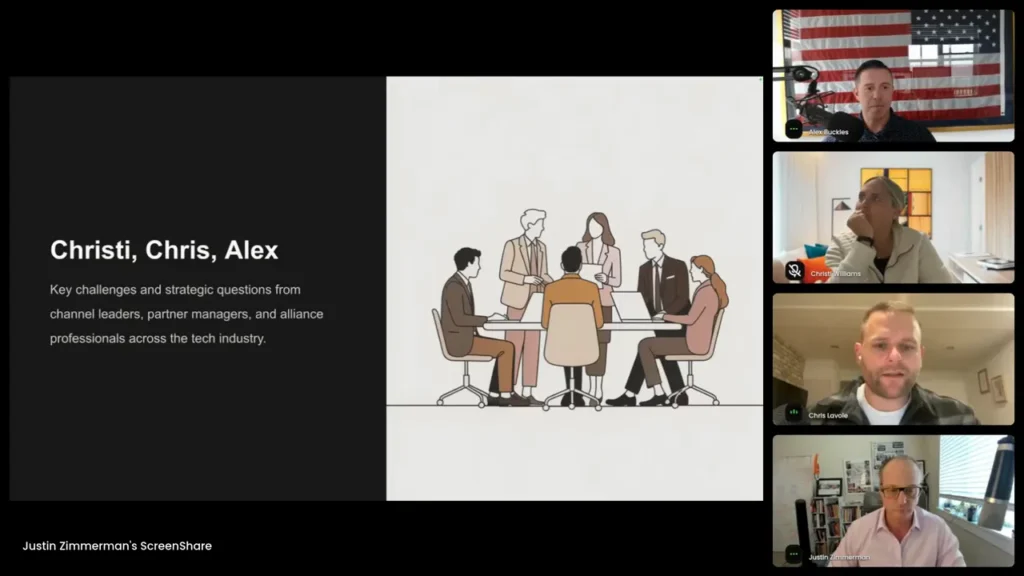
Featuring expert advice from Christi Williams, Alex Buckles, Chris Lavoie.
Introduction
You already know that partnerships are one of the highest-leverage channels for growth — but turning that potential into predictable pipeline takes more than a partnership directory and a couple of webinars. This article synthesizes practical, repeatable advice from experts who’ve built co-sell and co-market programs at scale: Christi Williams (HubSpot), Alex Buckles (Forecastable), and contributions from Chris LeBlaw (Partnership Mastermind). Expect tactical templates, organizational playbooks, incentive design, and a clear step-by-step plan to pilot, prove, and scale a co-sell engine that your sales team will actually embrace.
Table of Contents
- Why co-sell fails (and how to prevent it)
- Mutual action plans: the one document that unlocks control
- Build with, not for: the psychology of adoption
- Start small: pilot strategy and champion sequencing
- MDF, funding, and what makes a program investable
- Incentives that actually move partners (company vs. individual)
- Case study: Partner Growth Accelerator (what works)
- Agency partnerships and professional services alignment
- Co-opetition: how to partner when you technically compete
- Execution checklist: what to ship in week 1, month 1, quarter 1
- FAQs
- Conclusion
Why co-sell fails (and how to prevent it)
Co-selling sounds great in theory. Two teams, one customer, doubled reach. But in practice, it often sputters because of misalignment: competing priorities, unclear roles, and a lack of tangible benefit for the people on the ground. The recurring themes from experienced practitioners are blunt and consistent:
- Sales reps hate being told what to do. Partners aren’t employees. They want agency.
- Programs built in isolation fail. If AEs and managers didn’t help design the process, adoption is low.
- Without a clear order of operations and a way of documenting the shared work, co-sells degrade into chaos.
Fix three simple things and you unlock steady co-sell motion: a clear mutual action plan for every joint opportunity, human-centered program design built with cross-functional stakeholders, and pilots that create visible winners who can evangelize from inside the sales organization.
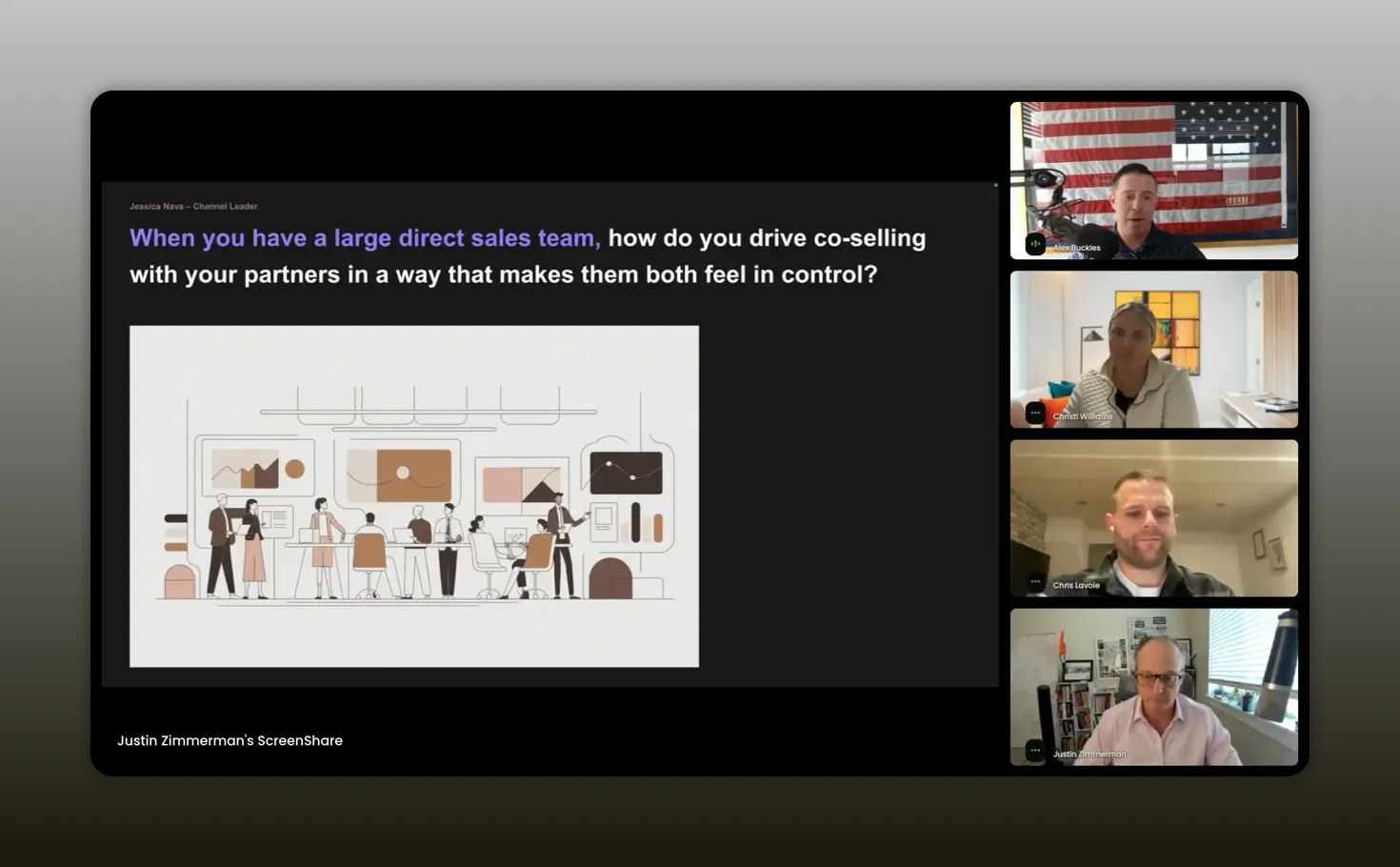
It’s order of operations. There is a best practice way to go run a sales cycle. – Alex Buckles
Mutual action plans: the one document that unlocks control
When people say they want control in a co-sell, what they usually mean is clarity: who does what, when, and how will we know if the opportunity is progressing as planned? Alex calls this the co-sell plan — a mutual action plan that outlines each step of the shared sales cycle.
What to include in a co-sell (mutual action) plan
- Account segmentation and ideal customer profile (ICP) alignment — confirm you’re targeting the same buyer persona and business outcome.
- Owner matrix — who is the deal owner, who supports discovery, who runs demos, who owns contract negotiations.
- Order of operations — the precise sequence of activities (example: discovery -> SI join for technical discovery -> tailored demo -> procurement conversation).
- Key success metrics and milestones — what qualifies as a sales-qualified opportunity, the demo acceptance, procurement engagement, and expected close date.
- Communication cadence and tools — where will updates be logged (CRM, Slack, shared doc), and which meetings are required.
- Escalation path — if the deal stalls, who do you ping and by when.
Why this works: it gives every participant predictability and accountability without removing autonomy. The plan is a living artifact — not a rigid script — and it provides the shared language to resolve ambiguity quickly.
Build with, not for: the psychology of adoption
Process design is a human problem before it’s a technical one. Chris emphasizes the importance of collaboration in building any partner-influenced process: invite the VP of sales and your top-performing AEs to the design table. When people help shape a workflow, they feel ownership and are far more likely to adopt the outcome.
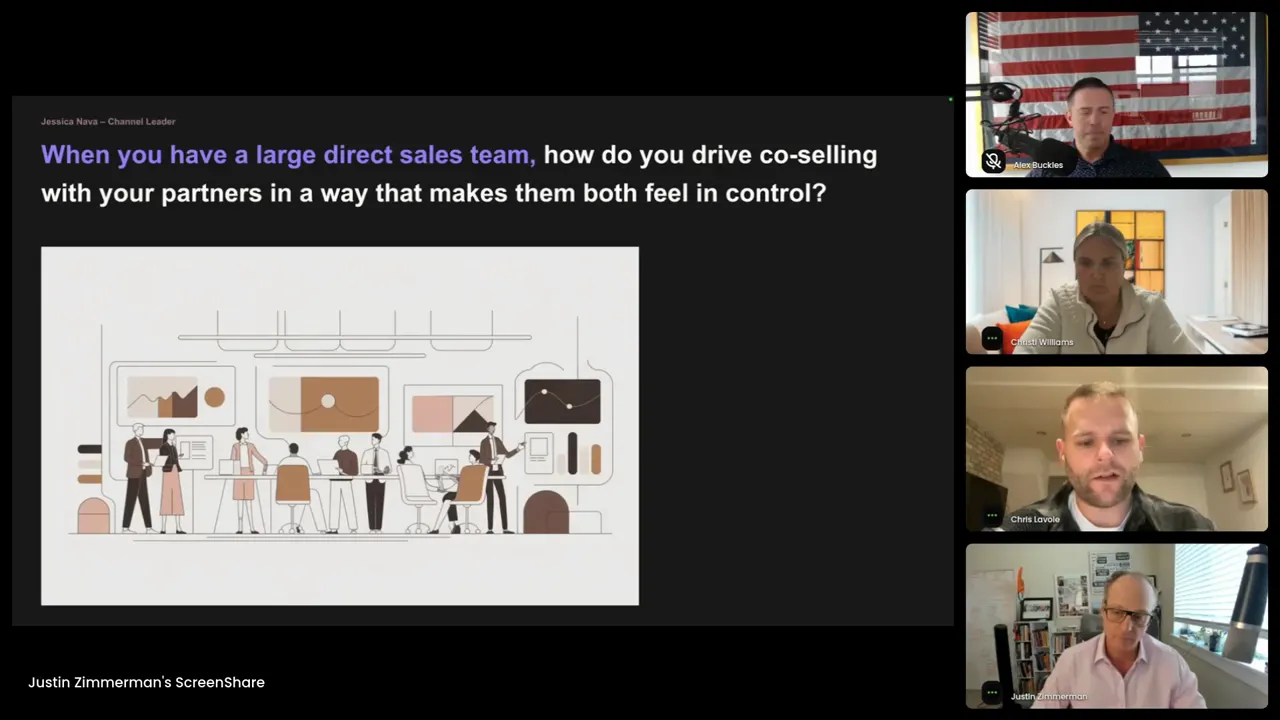
When we feel like we were part of building something, we’re just 10 times more likely to keep doing it. – Chris LeBlaw
How to run a design workshop that yields champions
- Start with five AEs and one sales leader. Map the current sales cycle and pain points.
- Co-create the mutual action plan template — let AEs name the milestones they care about.
- Agree on a 90-day pilot with one or two real accounts to test the plan in market.
- Set rapid feedback loops: weekly check-ins and a short retrospective after every closed or lost deal.
- Collect qualitative evidence (AE testimonials, partner wins) to bring to the broader sales org.
Result: you convert early adopters into internal champions who evangelize the approach because it solved their real-world problem — not because it came from a remote partnerships team.
Start small: pilot strategy and champion sequencing
Rolling out a co-sell program to 200 reps on day one is a guaranteed fail. The crawl-walk-run pattern is the repeatable way to build credibility and scale.
Recommended pilot roadmap
- Identify the “winner” AE(s) — high performers who are open to experimentation and have influence among peers.
- Get top-down buy-in from one manager or VP of sales; alignment across this layer prevents surprises.
- Run 3–6 pilot co-sells using your mutual action plan template. Treat these as experiments with clear hypotheses and metrics.
- Capture wins and process lessons. Use real deals to create case studies and internal enablement content.
- Scale by enabling 10–20 more AEs, then roll out to a segment or a vertical where the approach proved successful.
Chris warns about a common trap: if individual contributors (ICs) are using a co-sell process that their managers don’t understand or support, the program dies quickly. Make sure you have both bottom-up adoption and top-down alignment.
MDF, funding, and what makes a program investable
Co-marketing funds like MDF (Market Development Funds) are powerful tools for scaling partner-led demand — but funds rarely appear by accident. Christi explains that funding decisions come from the top: executives must view partnerships as a strategic extension of the company. That means showing a credible path to return on investment before asking for dedicated dollars.
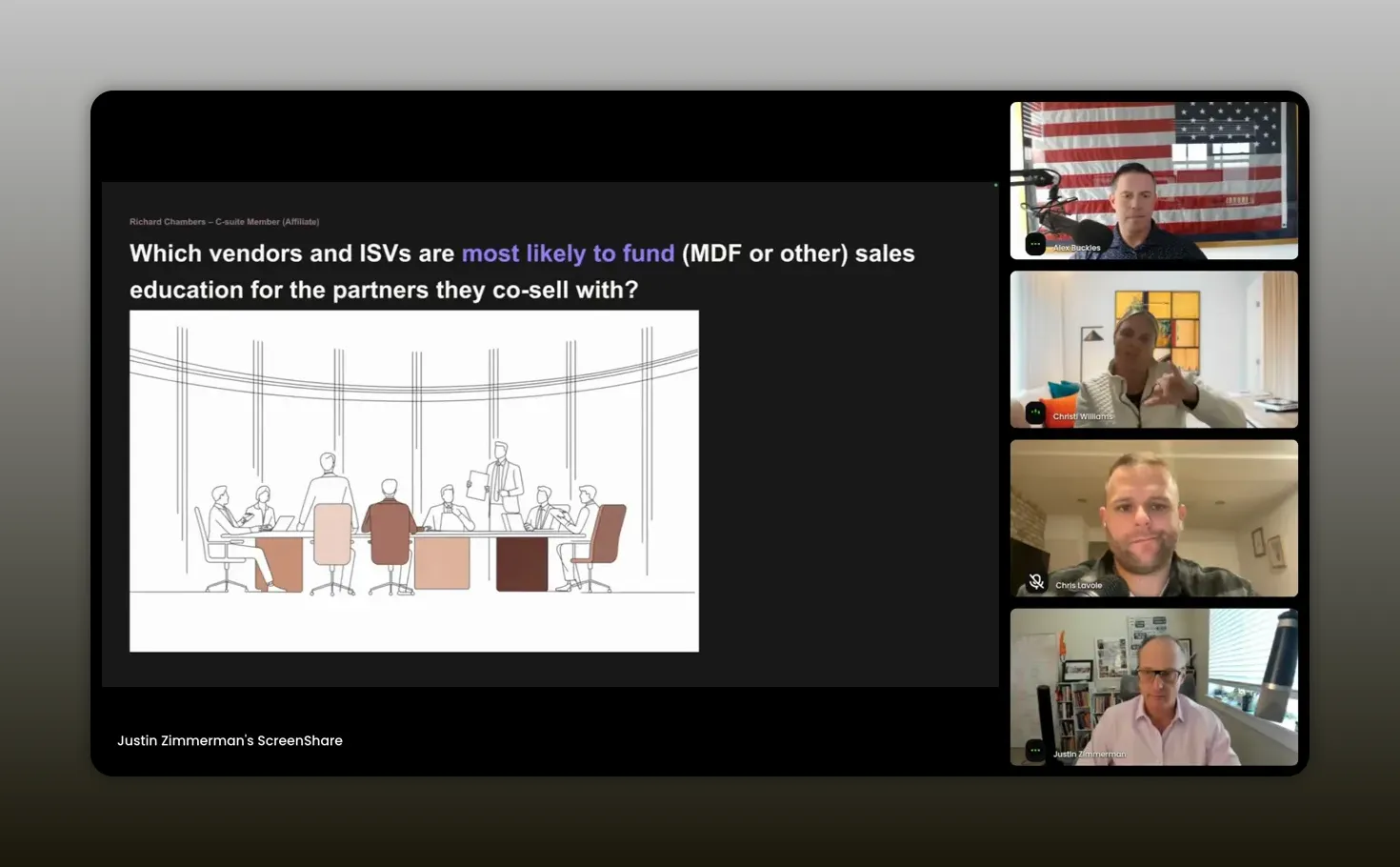
It comes from a vision at the top of seeing the extensibility that your partners can provide. – Christi Williams
When an ISV should expect MDF or investments
- Scale: you’re at a stage where partner-driven go-to-market materially impacts revenue or retention.
- Repeatability: you can demonstrate repeatable success working with partners — not just one-offs.
- Strategic alignment: partners fill a capability gap (industry expertise, services delivery, regional expansion) that fits the company vision.
- Governance: you have a program structure and guardrails that ensure funds are used to amplify outcomes (co-branded campaigns, vertical plays, joint events).
For early-stage ISVs, Christi points out a practical alternative: reinvest commissions or referral fees back into joint marketing efforts. That creates a virtuous loop where partners see both near-term revenue and longer-term demand generation support.
Incentives that actually move partners (company vs. individual)
Incentive design has two distinct audiences: the partner organization (company-level incentives) and the individuals who do the day-to-day work (individual-level incentives). Treat them differently.
Company-level incentives
- MDF or co-op funds tied to measurable joint KPIs (pipeline generated, qualified leads, closed-won ARR).
- Exclusive access to vertical plays or partner-only enablement (tier-based access to programs).
- Strategic resource investments: joint account planning support, early access to roadmaps, or engineering collaboration for integrability.
- Making your partnership program flexible and accommodating to what the partner values most — e.g., enterprise logos, geographic expansion, or engineering partnerships.
Individual-level incentives
- Referral fees or commissions when a partner rep or AE directly drives a closed deal.
- Recognition and promotion pathways: public recognition on sales calls or partner leaderboards.
- Free training and certification programs that increase partner rep capability and therefore their confidence to sell.
- Operational ease: rapid approvals, simplified co-sell processes, or dedicated partner success contacts that make execution frictionless.

Training and development are incentives too — upskilling partners while subsidizing their cost. – Christi Williams
Alex summarizes it plainly: the single biggest incentive is closed revenue. Everything else — training, MDF, exclusivity — are accelerants. If partners see that the co-sell path leads to predictable revenue, they’ll invest their time and attention.
Case study: Partner Growth Accelerator (what works)
HubSpot’s Partner Growth Accelerator (PGA) is a concrete example of a program engineered to create joint pipeline. The PGA is a six-week intensive designed to help technology and solutions partners develop joint value propositions and go-to-market plans against a shared ICP.
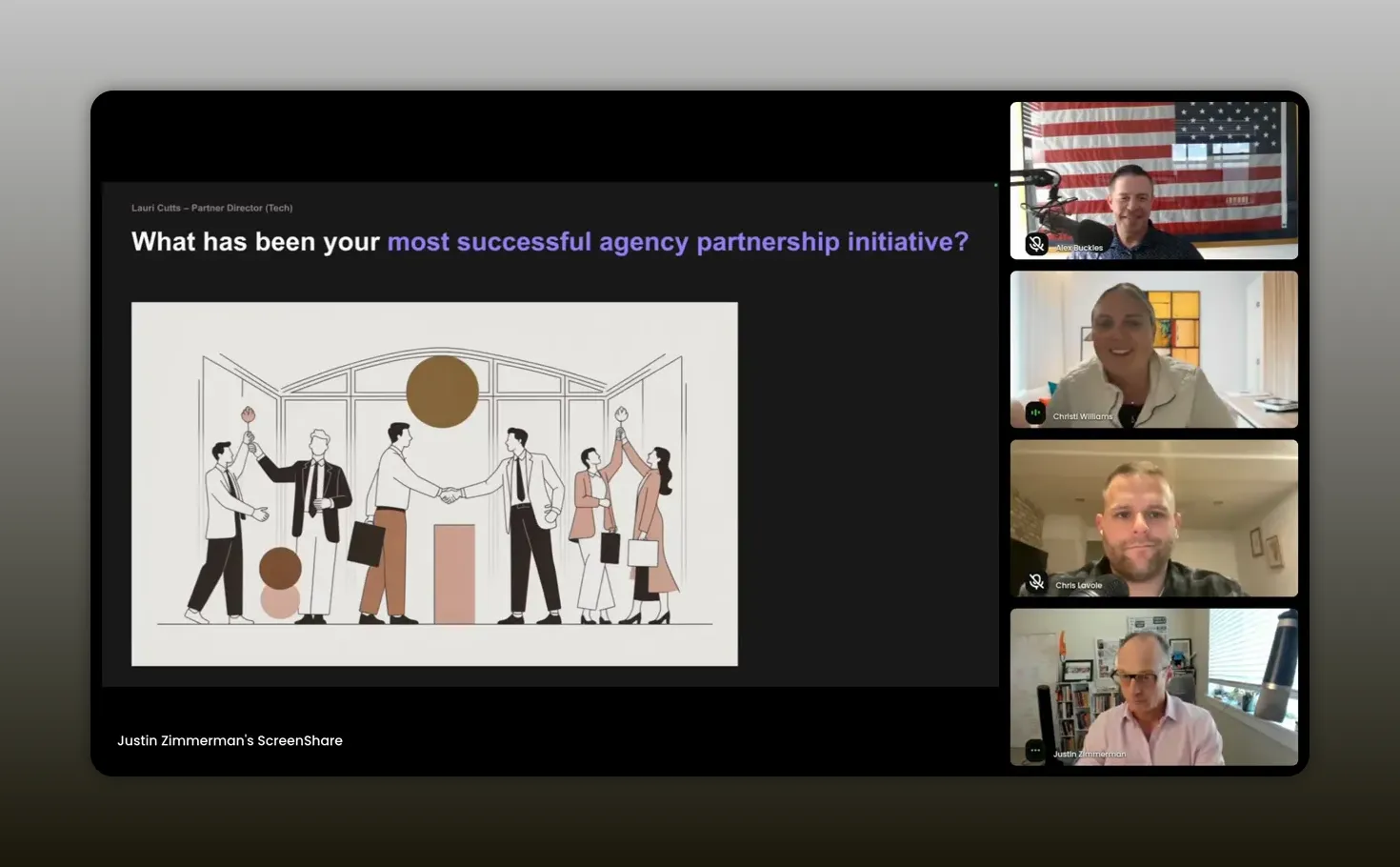
We developed a program to coach partners on joint value propositions over a shared ideal customer profile. – Christi Williams
Why it performs
- Targets cross-partner collaboration: brings tech and solutions partners together rather than siloed enablement.
- Focuses on ICP and value proposition alignment — so partners and product teams speak the same language to buyers.
- Includes tactical enablement: playbooks, pitch rehearsals, and panel coaching sessions with subject-matter experts.
- Measurable ROI: some cohorts recorded up to 63x ROI on the efforts — proof that investing in partner enablement pays off.
Running a similar accelerator in your ecosystem is a high-leverage way to convert organic partner collaboration into repeatable co-sell motion. Use cohorts to train both partners and sales reps on the shared playbook and then track results by cohort.
Agency partnerships and professional services alignment
Alex’s experience running revenue at a systems integrator shows a different but complementary route: make it easy for platform AEs to use you. When a partner becomes the “easy button” for account development and technical scoping, the platform’s AEs will feed them opportunities at scale.
How to become the “easy button”
- Create sales enablement collateral specifically for the platform’s AEs: playbooks, win themes vs. competitive alternatives, and ready-made outreach sequences.
- Offer packaged services tuned to common buying scenarios (e.g., competitive displacement, migrations, industry-specific deployments).
- Provide tangible evidence of ROI from similar accounts — case studies, references, and model financials.
- Be relentless about ease: light-touch contracting, rapid scoping tools, and clear SLAs.
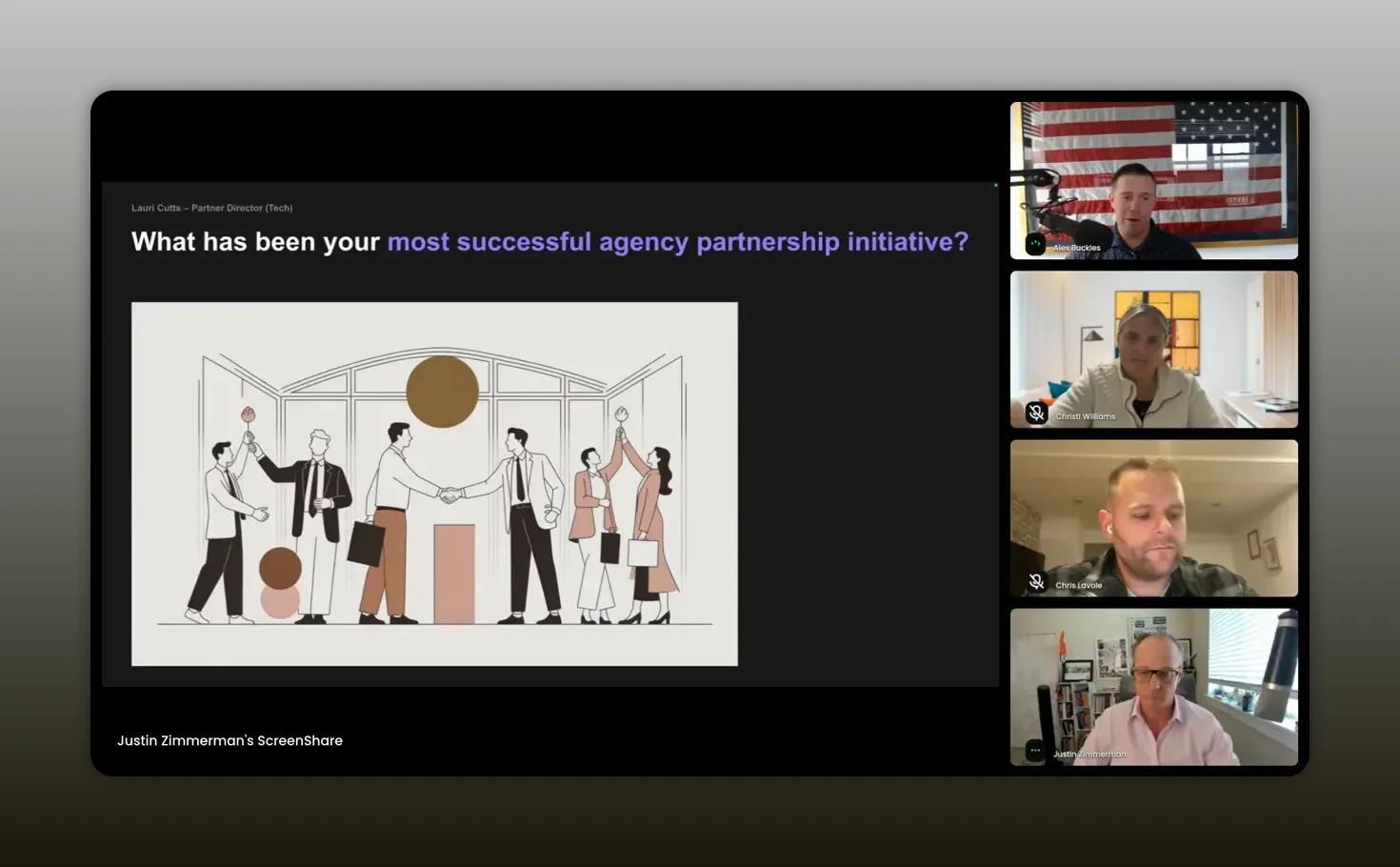
We made it easy for AEs to break into accounts using competitive intel and packaged plays. – Alex Buckles
Co-opetition: how to partner when you technically compete
One of the trickiest situations is when you and a potential strategic partner have overlapping functionality. The instinct is to assume “if they offer the feature, they won’t partner,” but both Chris and Alex describe repeatable ways to find win-win outcomes.
Practical approaches to co-opetition
- Map the buyer workflow: identify areas of overlap and clear points of differentiation. Where the partner’s breadth meets your depth, there’s usually a role for both.
- Find the deal-level entry point: in enterprise deals, budget pressure and scope changes often create white-space where a smaller vendor can replace or complement an incumbent component.
- Architect into systems integrator-led solutions: SIs often need niche components to complete a larger solution — become that component.
- Create a joint value proposition focused on the outcome rather than feature parity. Outcome-based positioning reframes the conversation away from “who does this feature” toward “who solves this business problem.”
If the buyer needs to cut scope, your smaller, cheaper component can keep the deal alive. – Alex Buckles
Ultimately, co-opetition works when you study the partner org deeply, select the right initial penetration point, and execute flawlessly to build trust. The early meetings require more homework — org charts, product maps, and competitive intelligence — but that due diligence pays off when you land your first integrated deal.
Execution checklist: what to ship in week 1, month 1, quarter 1
Here’s a practical rollout checklist you can apply to any co-sell pilot.
Week 1 (set the foundation)
- Choose one VP sponsor and one AE champion.
- Agree on the pilot scope (1–3 accounts, clear ICP).
- Create the mutual action plan template.
- Set up a shared communication channel and a reporting cadence.
Month 1 (run experiments)
- Execute co-sell on the pilot accounts using the mutual action plan.
- Hold weekly standups to collect real-time feedback and remove blockers.
- Log learnings and create a single-page case study for internal sharing.
Quarter 1 (validate and scale)
- Measure outcomes: pipeline created, conversion rates, deal sizes, time-to-close.
- Build enablement content: tech briefs, playbooks, demo scripts, and one-pagers.
- Expand to 10–20 AEs or to a targeted vertical based on pilot wins.
- Secure program funding if the ROI is proven — MDF, marketing budgets, or co-investment.
FAQs
How do you get sales leadership to buy into a co-sell pilot?
Start small and present a low-risk hypothesis. Identify a high-performing AE champion and one manager who can sponsor the pilot. Commit to measurable outcomes — pipeline created, conversion rate improvement, or reduced sales cycle — and promise a retrospective at the pilot’s end. Executives respond to clear KPIs more than theoretical benefits.
What should mutual action plans live in — CRM or shared docs?
Use the system that your AEs already live in. If your CRM supports multi-party activity and partner visibility, put the plan there. If not, use a shared doc with clear links back to CRM records. The objective is low friction: whatever reduces context switching for the AE will increase adoption.
At what stage should an ISV ask for MDF or co-marketing funds?
When you can demonstrate repeatable partner-led wins and a clear joint ICP. Senior leaders want to see that funds will amplify scalable outcomes, not subsidize one-off events. If you’re earlier-stage, use commissions or reinvest referral fees into joint marketing as proof before requesting formal MDF.
How do you handle situations where the partner product overlaps heavily with the platform?
Map the buyer journey to find white space and entry points. Identify SIs or service providers who can architect your product into larger solutions. Focus on outcomes rather than features and be willing to accept smaller, strategic deals that build credibility within the partner org.
What are the fastest ways to generate partner champions internally?
Run a tight pilot with measurable wins, surface testimonials from the champion AEs, and create short enablement artifacts that others can use immediately (1-page playbooks, demo templates, email sequences). Recognition in the weekly sales meeting goes a long way too.
Conclusion
Partnerships shift from promising to productive when you move from ad-hoc collaboration to disciplined, repeatable practice. The core levers are human-centered design, mutual action plans that create clarity, a pilot-first mindset that builds champions, and incentive structures that reward both companies and the people who do the work. Whether you’re an ISV seeking MDF or an agency looking to become the “easy button” for platform AEs, the path is the same: map the workflow, align incentives, prove value with small experiments, and scale what’s already working.
Takeaway action: pick one pilot account, draft a mutual action plan with an AE, and run a six-week experiment. Measure outcomes, capture anecdotal wins, and then use those results to ask for budget or broader organizational backing. Co-sell isn’t magic — it’s engineered repeatability. When engineered well, it becomes one of the most durable channels for growth.